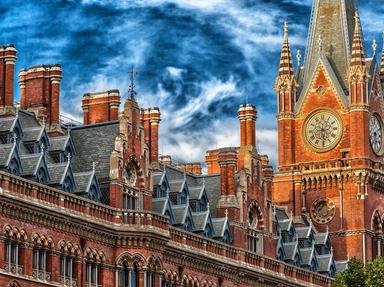Quiz Answer Key and Fun Facts
1. Hikers come to Chipping Campden in Gloucestershire to walk the 164 km-long (102 mile) Cotswold Way. Along the trail they can see all but one of the following. Which one is NOT near the Cotswold Way?
2. Horse lovers come to the village of Badminton in Gloucestershire for an annual event featuring which sport?
3. Surfing enthusiasts come to Gloucestershire from miles around to surf the Severn Bore. Some of the best viewings are near the villages of Newnham-on-Severn and Minsterworth. What is a tidal bore?
4. Those romantic at heart come to Gloucestershire to see the tomb of Katherine Parr in St Marys Chapel at Sudeley Castle in Winchcombe. Which is NOT true about the end of her life?
5. Classical music lovers come to Gloucestershire to attend an annual festival in the village of Longborough. Which genre of music do they hear?
6. Those interested in England's lengthy mining history come to the Clearwell Caves near Coleford in Gloucestershire. Three of the following statements about the caves are true. Which one is NOT?
7. Medieval enthusiasts come to Tewkesbury in Gloucestershire for an annual fair which includes a re-enactment of the 1471 Battle of Tewkesbury, part of which wars?
8. Air buffs come to the Royal Air Force Fairford airfield near Lechlade for the annual Royal International Air Tattoo Show. What type of aircraft are usually on display?
9. Those interested in learning more about the man who helped eradicate smallpox come to Berkeley in Gloucestershire. Who was this pioneer of the smallpox vaccine?
10. Those interested in the history of English royals come to Berkeley Castle in Gloucestershire to see where Edward II was murdered. Which Elizabethan playwright wrote "Edward II" recounting the foul deed?
Source: Author
pitegny
This quiz was reviewed by FunTrivia editor
agony before going online.
Any errors found in FunTrivia content are routinely corrected through our feedback system.
